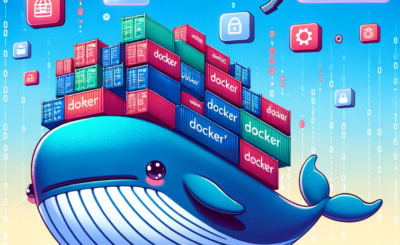Table of Contents
- 1 Introduction
- 2 What is AIOps?
- 3 The Ultimate Guide to Choosing the Best AIOps Platform
- 3.1 Step 1: Identify Your Business Needs
- 3.2 Step 2: Define Your Goals and Objectives
- 3.3 Step 3: Evaluate Key Features
- 3.4 Step 4: Consider Scalability and Flexibility
- 3.5 Step 5: Research and Compare Top AIOps Platforms
- 3.6 Step 6: Request Demos and Trials
- 3.7 Step 7: Assess Total Cost of Ownership
- 3.8 Step 8: Plan for Implementation and Integration
- 3.9 Step 9: Train Your Team
- 3.10 Step 10: Monitor and Optimize
- 4 FAQs about Choosing the Best AIOps Platform
- 5 Conclusion
Introduction
In today’s digital age, IT operations are becoming increasingly complex. The sheer volume of data, coupled with the need for real-time analysis and action, makes traditional IT management tools inadequate. Enter AIOps – Artificial Intelligence for IT Operations. These platforms leverage AI and machine learning to automate and enhance IT operations, providing insights and efficiencies that were previously unattainable.
This article is The Ultimate Guide to Choosing the Best AIOps Platform for your business, offering you the insights you need to make an informed decision.
What is AIOps?
Understanding AIOps
AIOps platforms utilize big data, analytics, and machine learning to improve and automate IT operations. By collecting and analyzing data from various IT infrastructure components, AIOps can identify patterns, detect anomalies, and automate responses to potential issues.
Benefits of AIOps
- Enhanced Efficiency: Automates routine tasks, allowing IT staff to focus on strategic initiatives.
- Proactive Issue Resolution: Identifies and addresses problems before they impact users.
- Improved Decision-Making: Provides actionable insights derived from data analysis.
- Cost Reduction: Optimizes resource usage, reducing operational costs.
The Ultimate Guide to Choosing the Best AIOps Platform
Step 1: Identify Your Business Needs
Understanding Your IT Environment
Before choosing an AIOps platform, it’s crucial to understand your current IT environment and the specific challenges you face. This involves evaluating your infrastructure, applications, and services to determine where an AIOps platform can add the most value.
Key Questions to Ask
- What are the main pain points in your IT operations?
- Which processes are currently manual and time-consuming?
- What kind of data do you need to analyze, and what insights are you hoping to gain?
Step 2: Define Your Goals and Objectives
Setting Clear Goals
Your goals should align with your overall business strategy. Whether you aim to reduce downtime, improve system reliability, or optimize resource usage, having clear objectives will guide your selection process.
Examples of Goals
- Reduce mean time to resolution (MTTR).
- Enhance system uptime and reliability.
- Automate routine IT tasks to free up staff for more strategic work.
- Gain deeper insights into system performance and user behavior.
Step 3: Evaluate Key Features
Essential AIOps Features
When evaluating AIOps platforms, consider the following key features:
- Data Collection and Integration: Ability to collect and integrate data from various sources.
- Real-Time Monitoring and Alerts: Provides real-time insights and alerts for potential issues.
- Machine Learning Capabilities: Uses machine learning to detect patterns and predict issues.
- Automation: Automates routine tasks and incident responses.
- User-Friendly Interface: Easy-to-use interface that doesn’t require extensive training.
Step 4: Consider Scalability and Flexibility
Scalability
As your business grows, so will your IT infrastructure. Choose an AIOps platform that can scale with your needs, handling increasing volumes of data and more complex environments.
Flexibility
The platform should be flexible enough to adapt to your specific requirements and integrate seamlessly with your existing tools and systems.
Step 5: Research and Compare Top AIOps Platforms
Top AIOps Platforms
Here are some of the leading AIOps platforms to consider:
- Splunk
- Key Features: Real-time monitoring, advanced analytics, custom dashboards, seamless integration.
- Why Choose Splunk? Offers comprehensive insights and operational intelligence, ideal for large-scale environments.
- Moogsoft
- Key Features: Noise reduction, event correlation, automated remediation, collaboration tools.
- Why Choose Moogsoft? Excels in incident management and alert reduction, improving operational efficiency.
- Dynatrace
- Key Features: Full-stack monitoring, AI-powered insights, automatic discovery, scalability.
- Why Choose Dynatrace? Provides deep visibility across the entire IT stack, making it suitable for complex environments.
- AppDynamics
- Key Features: End-to-end visibility, business insights, machine learning, customizable alerts.
- Why Choose AppDynamics? Connects IT performance with business outcomes, enhancing both operational and strategic decision-making.
- BigPanda
- Key Features: Alert correlation, root cause analysis, automated workflows, integration capabilities.
- Why Choose BigPanda? Effective in reducing alert noise and providing actionable insights for faster incident resolution.
Step 6: Request Demos and Trials
Hands-On Evaluation
Request demos and trials from the AIOps vendors you are considering. This hands-on evaluation will help you understand how the platform works in your specific environment and whether it meets your needs.
Step 7: Assess Total Cost of Ownership
Cost Considerations
Evaluate the total cost of ownership, including licensing fees, implementation costs, training, and ongoing support. Ensure that the platform offers good value for the investment.
Step 8: Plan for Implementation and Integration
Implementation Strategy
Develop a detailed implementation plan that includes timelines, resource allocation, and risk management. Ensure that you have a clear integration strategy to minimize disruptions.
Step 9: Train Your Team
Training and Support
Provide comprehensive training for your IT staff to ensure they are proficient in using the new AIOps platform. Utilize vendor support and resources to facilitate this process.
Step 10: Monitor and Optimize
Continuous Improvement
Once the AIOps platform is implemented, continuously monitor its performance and impact on your IT operations. Regularly review and optimize its use to ensure you are maximizing ROI.
FAQs about Choosing the Best AIOps Platform
What are the most important features to look for in an AIOps platform?
Key features to look for include data collection and integration capabilities, real-time monitoring and alerts, machine learning, automation, and a user-friendly interface.
How can AIOps platforms improve IT operations?
AIOps platforms enhance IT operations by automating routine tasks, providing real-time insights, detecting anomalies, predicting issues, and enabling proactive issue resolution.
What is the typical cost of an AIOps platform?
The cost of an AIOps platform can vary widely depending on the features, scalability, and the vendor. It’s important to evaluate the total cost of ownership, including licensing, implementation, training, and support.
Can AIOps platforms integrate with existing IT tools?
Yes, most AIOps platforms are designed to integrate seamlessly with existing IT tools and systems. This ensures a smooth transition and maximizes the platform’s effectiveness.
Conclusion
Choosing the best AIOps platform is a critical decision that can significantly impact your IT operations and overall business performance. By following The Ultimate Guide to Choosing the Best AIOps Platform, you can make an informed decision that aligns with your business needs and goals. Remember to assess your current IT environment, define clear objectives, evaluate key features, and consider scalability and flexibility. With the right AIOps platform, you can enhance efficiency, improve decision-making, and achieve maximum ROI.
Embrace the power of AIOps today and transform your IT operations for a more efficient and reliable future! Thank you for reading the DevopsRoles page!

